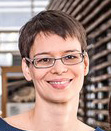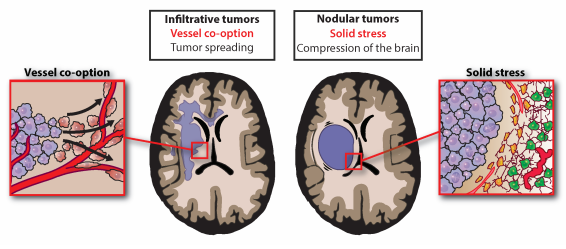 |
Barbara Klink (Institute for Clinical Genetics, Faculty of Medicine Carl Gustav Carus, TU Dresden & National Center for Tumor Diseases (NCT) partner site Dresden)November 27, 2017 – 2pm |
Genetic Characterization of Gliomas reveals novel insights into tumorigenesis and progressionGlioblastomas are the most common and most malignant brain tumors in adults with currently no curative therapies available. Molecular markers have recently been incorporated in the 4th edition of the WHO Classification of Tumours of the Central Nervous System to improve diagnosis and prognostication of gliomas. However, evolution of glioblastomas is still poorly understood and the observed intratumor heterogeneity might contribute to treatment failure. To study tumor heterogeneity and clonal evolution in gliomas, we combine OMICs data with bioinformatics approaches and mathematical modelling. One study focuses on rare patients with multiple synchronous tumor lesions – so called multifocal glioblastomas. We confirmed the monoclonal nature of all investigated multifocal glioblastomas and demonstrated that the characteristic genetic signature with marked heterogeneity in these tumors could be explained by parallel genetic evolution. Another ongoing study compares genetic alterations in secondary glioblastomas and their precursor tumors to distinguish between driver and passenger alterations in glioblastomas. Based on the integrative analysis of our data we aim at identifying new candidate genes as molecular therapeutic targets in gliomas. |
|
 |
Giorgio Seano, PhD. Junior Group Leader
|
In vivo dynamics and targeting of vessel co-option and mechanical stress in brain tumorsBrain tumors are highly lethal and cause significant neurologic dysfunction. Tumors can grow as infiltrative or nodular. Understanding the tumor growth pattern might provide us with key discoveries of new brain tumors vulnerabilities and innovative neuroprotective strategies. During the last five years in Boston, I extensively used intravital microscopy to study the in vivo dynamics of brain tumor growth. I will show the results from two parallel studies. In the first, we demonstrated that specific brain tumors highly invade the surrounding tissue by using the pre-existing brain vasculature, phenomenon called vessel co-option. We investigated the molecular mechanisms underling this pathological event and proposed new therapeutic strategies capable to improve survival in glioblastoma-bearing mice. In the second project, we investigated the neurodamage caused by primary and metastatic brain tumors that grow nodularly. They push, generate mechanical stress and cause neurodamage. Thus, we proposed neuroprotective interventions that reduce the neurologic impairment given by tumor-generated mechanical forces. These two parallel studies covered a large range of pathophysiological phenomena occurring in brain tumors and will provide my new team with the bases to build its own research field in tumor microenvironment and brain tumors. https://science.curie.fr/members/giorgio-seano/ |
|

